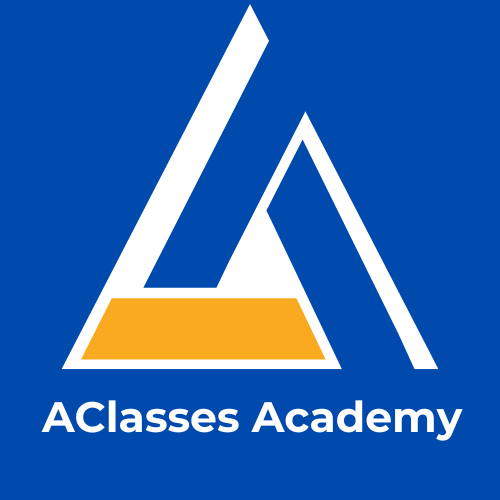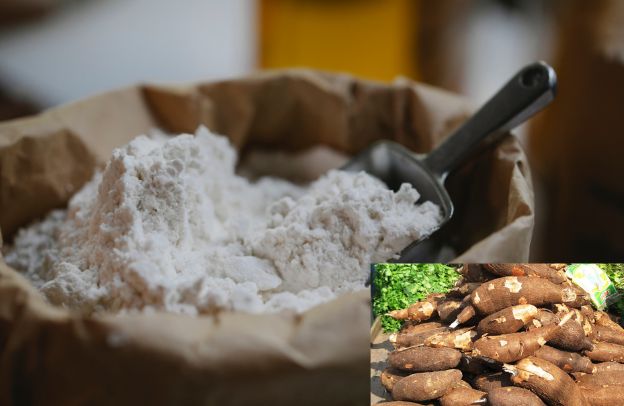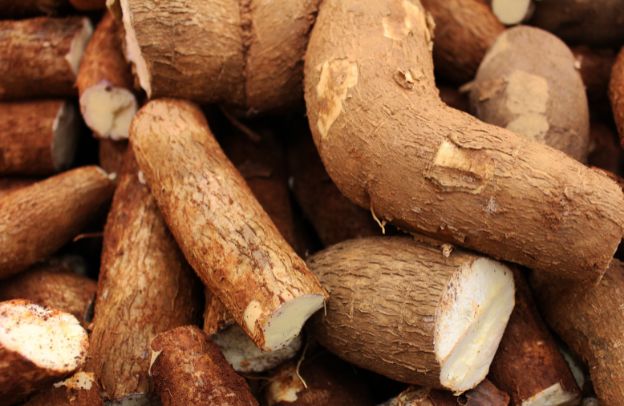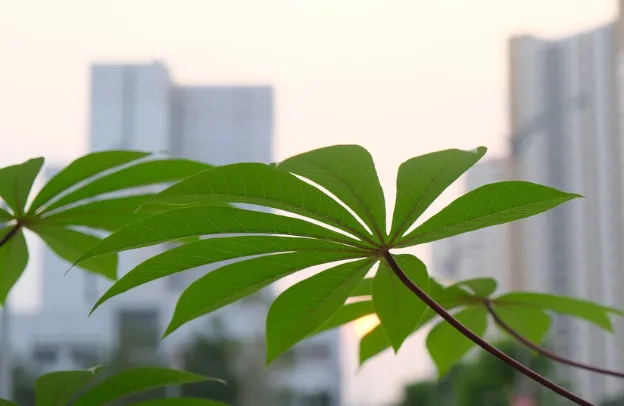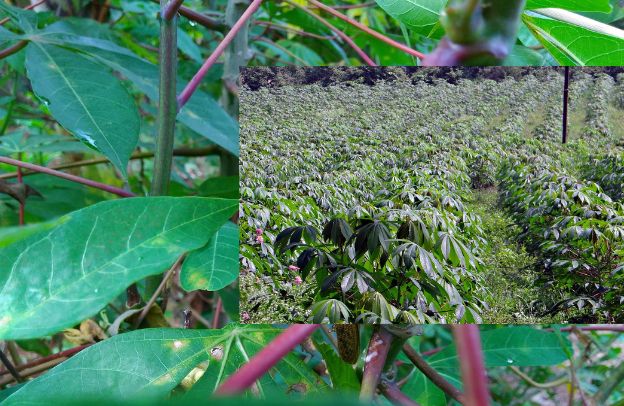Why Cassava Is Considered A Sustainable And Drought-Resistant Crop

Cassava, also known as yucca or manioc, is a root vegetable that is widely cultivated in tropical regions around the world, particularly in Africa and South America. Despite its relatively unknown status in many parts of the world, it is a highly nutritious and versatile crop that is an important staple food for millions of people in developing countries.
Learn How to Leverage Your Story through our Story To Asset Transformation (S.A.T) Framework.
As the world grapples with the looming threats of climate change, food insecurity, and environmental degradation, can a humble root crop like cassava hold the key to unlocking a more sustainable, resilient future for millions?
According to a research paper “Cassava: The Drought, War and Famine Crop in a Changing World” published at Research Gate, Cassava is a cornerstone in the diets of over 800 million individuals globally, predominantly in regions such as sub-Saharan Africa, Asia, and Latin America.
Its prominence is not merely a result of its caloric contribution but is deeply rooted in its exceptional resilience and sustainability, especially amidst the escalating challenges posed by climate change.
This article delves into the multifaceted attributes of cassava, exploring its drought resistance, adaptability to marginal soils, sustainable cultivation practices, and its profound economic and food security implications.
See also: Cassava and Food Security in Sub-Saharan Africa: Challenges and Solutions
Drought Resistance and Climate Resilience
One of cassava’s most remarkable characteristics is its inherent tolerance to drought conditions. This resilience is primarily attributed to its extensive root system and efficient water utilization mechanisms, enabling it to flourish in environments where water scarcity would typically hinder the growth of other staple crops.
Studies have highlighted that cassava can maintain productivity even under prolonged dry spells, making it a reliable food source in drought-prone regions. As climate change intensifies, leading to more frequent and severe droughts, cassava’s robustness offers a strategic advantage for ensuring food security in vulnerable areas. citeturn0search0
Adaptability to Marginal Soils
Beyond its drought resistance, cassava exhibits a remarkable ability to thrive in poor, nutrient-deficient soils. This adaptability reduces the dependence on chemical fertilizers, which are often financially inaccessible to smallholder farmers.
By cultivating cassava, these farmers can make productive use of lands that are otherwise considered unsuitable for agriculture, thereby enhancing land use efficiency and contributing to sustainable agricultural practices.
Sustainable Cultivation Practices for Cassava
Cassava is a versatile and adaptable crop that lends itself well to various sustainable cultivation practices. These practices not only enhance the crop’s productivity and resilience but also contribute to environmental conservation, social equity, and economic viability.
See also: The Economic Value Of Cassava Farming In Africa Today
Intercropping and Crop Rotation
Integrating cassava with other crops can improve soil fertility, reduce pest and disease incidence, and optimize land use. This practice, known as intercropping, involves growing multiple crops simultaneously on the same land. Cassava can be intercropped with legumes, such as beans or peas, which fix nitrogen in the soil, reducing the need for synthetic fertilizers.
Crop rotation is another practice that involves rotating cassava with other crops to maintain soil fertility and reduce pests and diseases. For example, rotating cassava with maize or sorghum can help break disease cycles and improve soil structure.
Organic Fertilization
Utilizing organic matter, such as compost or green manure, supports soil health and reduces the environmental footprint associated with synthetic fertilizers. Organic fertilizers release nutrients slowly, reducing soil degradation and promoting soil biota.
Cassava farmers can use various organic fertilizers, including:
- Compost: Made from decomposed organic matter, compost adds nutrients and improves soil structure.
- Green manure: Legumes or other plants are incorporated into the soil to provide nutrients.
- Animal manure: Manure from animals, such as chickens or cows, can be used to fertilize cassava crops.
See also: Maximizing Cassava Yield: Fertilizer Application Strategies for Small-Scale Farmers in Nigeria
Minimal Tillage
Cassava’s growth habit allows for reduced tillage practices, which help preserve soil structure and prevent erosion. Minimal tillage involves reducing the frequency and depth of tillage operations, which can damage soil health and lead to erosion.
By adopting minimal tillage practices, cassava farmers can:
Reduce soil erosion: By minimizing soil disturbance, farmers can reduce soil erosion and preserve topsoil.
Improve soil health: Reduced tillage helps preserve soil biota and structure, leading to improved soil fertility and water-holding capacity.
Increase water retention: Minimal tillage helps reduce soil compaction, allowing water to infiltrate the soil more easily.
Other Sustainable Practices
Other sustainable practices that can be adopted in cassava cultivation include:
- Agroforestry: Integrating cassava with trees can provide shade, improve soil health, and promote biodiversity.
- Conservation agriculture: This practice involves minimizing soil disturbance, maintaining soil cover, and rotating crops to promote soil health and reduce erosion.
- Integrated pest management: This approach involves using a combination of techniques, such as crop rotation, biological control, and cultural controls, to manage pests and diseases.
By adopting these sustainable practices, cassava farmers can contribute to environmental conservation, improve their livelihoods, and promote food security.
Economic and Food Security Implications
Cassava’s resilience and adaptability translate into significant economic and food security benefits:
Income Generation:
For millions of smallholder farmers, cassava serves as a vital source of income. Its ability to grow in challenging conditions ensures a harvest even when other crops fail, providing a financial safety net.
Industrial Applications:
Beyond direct consumption, cassava is processed into various products, including flour, starch, and biofuels. This versatility opens avenues for industrial utilization, fostering economic diversification and job creation.
See also: The 5 Healthy Benefits Of Cassava Consumption
Food Security
In regions susceptible to climate-induced crop failures, cassava’s reliability ensures a steady food supply, thereby mitigating hunger and malnutrition.
The crop’s role in both subsistence and commercial agriculture underscores its importance in promoting economic stability and food sovereignty.
Challenges and Future Prospects
While cassava offers numerous benefits, certain challenges need addressing to fully harness its potential:
- Post-Harvest Deterioration: Cassava roots are prone to rapid spoilage after harvest, necessitating efficient processing and storage solutions to reduce losses.
- Pest and Disease Management: The crop is susceptible to various pests and diseases, which can significantly impact yields. Integrated pest management strategies and the development of resistant varieties are crucial for sustainable production.
- Market Access: Improving infrastructure and market linkages can enhance the profitability of cassava farming, enabling farmers to access broader markets and receive fair compensation for their produce.
Addressing these challenges through research, policy support, and investment can amplify cassava’s contributions to sustainable development.
See also: The Economic Benefits Of Cassava Cultivation In Nigeria
Conclusion
Cassava’s unique combination of drought resistance, adaptability to marginal soils, and compatibility with sustainable farming practices positions it as a cornerstone crop in the quest for global food security amidst climate change.
Its cultivation not only supports the livelihoods of millions but also offers a resilient and sustainable food source in an increasingly unpredictable world.
By investing in cassava research, infrastructure, and market development, stakeholders can unlock their full potential, fostering a more food-secure and economically stable future.
Learn How to Leverage Your Story through our Story To Asset Transformation (S.A.T) Framework.
